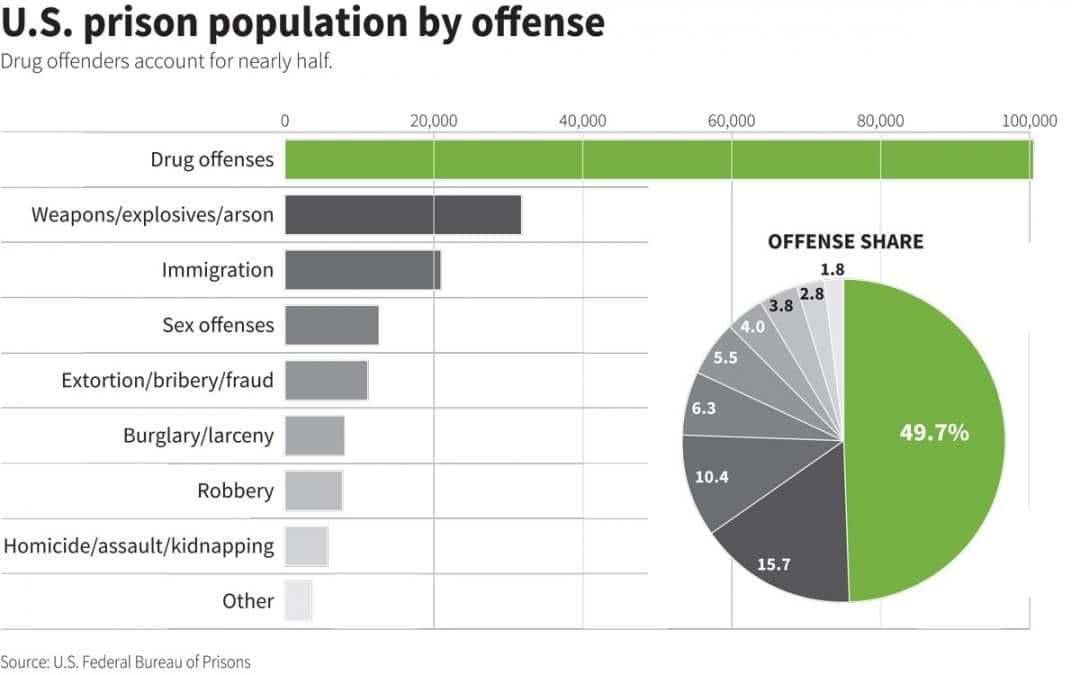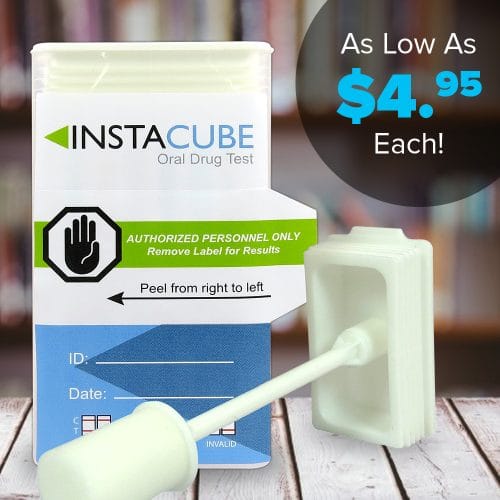It is common knowledge that America’s jail system is facing serious overcrowding. Why? Because every teenager who has a handful of pot on him is incarcerated, adding to the 1 million+ already in there for the same minor offense in most cases! The cascading affect: the federal prison population has grown by 790% since 1980. Here are some chilling statistics:
• It is estimated that our lock up facilities house 2.4 million people, making America leading the way in prison population in the entire world.
• Nearly 800,000 Americans work in the prison system, making it the largest prison economy in the world.
• There are 5000+ jails in America
• America has more jails than colleges
• Mandatory sentencing for drug offences in the 1980’s has quadrupled the inmate population
• 51% of these inmates have been incarcerated for nonviolent and small time drug offenses
• American taxpayers contribute $79 billion a year to maintain America’s prison population
This dramatic increase augmented the need for facilities, kitchens, laundries and all other services that are needed to house an inmate; have these also grown accordingly? No, these have not kept pace with the rise in prison numbers. It has resulted in the endangerment of the lives of not only inmates but also the correction officers and other on-site staffers. This was testified by none other than the Bureau of Prisons Director Charles Samuels Jr. It is estimated that it will take nearly 90 years to a century for this issue to be resolved naturally.
America’s War on Drugs
The much publicized, America’s War on Drugs initiative is to blame for this dramatic increase in the prison population and consequently the endangerment of those inside the barbed wire fences and the suffering of their families outside the prison walls. In 1971, the then President, Richard Nixon put into law a “war on drugs” wherein a massive effort was launched against to punish the offenders by giving strict and lengthy prison time to those caught with even a minuscule quantity of drugs. Marijuana was classified as a Schedule One drug pending review by a commission. The commission unanimously ruled against Nixon stating that criminalizing possession of marijuana for personal use should not go into effect. However, Nixon rejected the recommendation. This did not go well with the American population at large and President Jimmy Carter was elected as he was against the criminalization of marijuana.
In the early 1980’s the Presidency of Ronald Reagan witnessed a massive rise once again against drugs and hundreds of thousands of small time drug offenders were incarcerated and the prison population on these charges rose from 50,000 to 400,000 by the mid 1990’s. First lady Nancy Reagan launched the famous anti-drug campaign, “Just Say No” which set the stage for a zero tolerance policy and growing hysteria against drugs. Along with the mass incarcerations came other social problems such as a dramatic rise in jailed African American young adults leading to many children growing up in homes with an absent father. These children suffered emotional problems and school dropout rates grew. Many got recruited into gangs and began a life of violence.
In the 2000’s a more sensible approach began to take shape and people began to question that the overcrowding in America’s jails was pointless, yet not much was done on this front. Many argue that we need to change the focus from small time drug offenders to those who are peddling drugs that are more dangerous such as heroin, crack and prescription drug abuse. Per the Center for Disease Control (CDC), the War on Drugs has failed as deaths from drug overdoses were the highest in recorded history in 2014. 50,000 Americans died of a drug problem in 2014, which is double the number in 2000; what is behind these staggering numbers?
The reasons are multi-pronged:
• Drugs of abuse have grown stronger, yet cheaper to buy.
• Marijuana has largely become a ‘gateway’ drug and those with addictive tendencies are moving on to more ‘potent’ drugs that give better highs. Heroin is known to give a nearly unmatched high within just 15 minutes of use. Crack cocaine produces a high when snorted in just 1-5 minutes; peak in 20-30 minutes and this high can last for up to an hour.
• A broken family system, more latchkey children and the intense need of unhappy teens to be ‘cool’ has made them more susceptible to fall prey to try drugs.
In April, 2015, President Obama stated, “I am a very strong believer that the path we have taken in the United States in the so-called war on drugs has been so heavy in emphasizing incarceration that it has been counterproductive,” he said. “You have young people who did not engage in violence who get very long penalties, who get placed in prison and then are rendered economically unemployable, are almost pushed into the underground economy, learn crime more effectively in prison — families are devastated. So it’s been very unproductive.”
What then is the question that truly needs to be addressed? Overcrowding in jails or how can we prevent young adults from using drugs in the first place?



